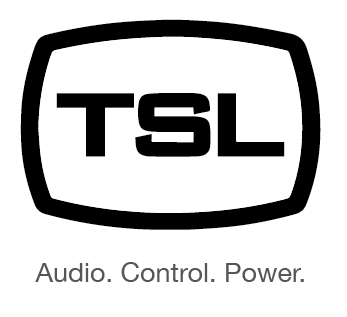EXPLORE THE HUB: Hot Topcis and Deep Dives | Ebooks and Technical Application | Case Studies
What is SDI and Where is it going?
SDI is one of those technologies that is so well established and ubiquitous it can almost be taken for granted. It has been a mainstay of broadcast technical infrastructures, both in TV studios and outside broadcast (OB) trucks, for so long people could be forgiven for thinking it will always be there. But, as with many other formats before it, SDI is reaching a point where its dominance is being challenged in a technology market experiencing significant changes that call for more effective solutions.
The continuing move towards 4k/UHD (Ultra High Definition) resolution production and delivery, championed by streaming services Netflix and Amazon Prime, is only increasing the pressure on SDI and the traditional infrastructures based on it. With broadcasters and OTT operators already considering following the lead of NHK in utilising 8k for prestige live events - as the Japanese broadcaster is for the 2020 Olympics in Tokyo - and the possibility of even higher resolutions, those limitations will be even more apparent.
IP has long been held up as the successor to SDI but it is only now that the younger technology is proving itself as the way ahead. The demise of SDI has been predicted in recent years and since I joined TSL Products three years ago there has been a significant increase in the number of people depending on IP. But it will not be an easy transition between the two and people are still talking about SDI, despite the number of new studios and OB trucks that are now being built with IP foundations rather than its more venerable competitor.
What is SDI?
Serial digital interface, to give SDI its full name, was developed to transmit uncompressed, unencrypted digital video signals around broadcast TV facilities. Standardised in 1989 by the US Society of Motion Picture and Television Engineers (SMPTE), it was initially for standard definition systems and included options such as embedded audio, timecode and packetised data. Specifications and requirements for SD-SDI digital video interfacing of broadcast quality video is laid out in both SMPTE 259M and ITU-R BT.656.
SDI was a major move on from analogue component video, which, with composite, had been one of the two main formats in broadcast video during the 1980s. In those days TV centre installations demanded much more space, cabling and interfacing than they do now. This was largely due to the need for two routing systems; one for video, one for audio. As part of this, each device had to be connected by three or four coaxial cables to carry the different video and audio elements.
The beauty of SDI was the ability to carry digital component video and digital audio down a single coax cable. Only one router was necessary because audio was embedded into the video signal. In that respect, SDI was a transformative technology but perhaps engineers and integrators working with it in the 1990s did not imagine they would still be using it in 2020. Which isn't saying that SDI has not evolved over the last 31 years and adapted to changing needs. New developments and standardisations were introduced to accommodate emerging formats and configurations as they arose. These included SMPTE 292M for HD-SDI in 1998 and SMPTE 372M, covering Dual Link HD-SDI (2002) for even higher definition applications.
SDI is now classified by multiple standards for different technologies, resolutions and infrastructures. While all of these are important perhaps the most significant is SMPTE 424M, published in 2006. This specifies 3G-SDI, which signalled a key change in the way broadcast facilities were designed and installed. The higher bit-rate of 3 Gbit/s (although, realistically, it was 2.97 Gbit/s) was a way to future-proof the core infrastructure of a studio or OB truck and allow for new technologies and products to be integrated in the future.
The bit-rate for SDI has continued to rise on a regular basis; from 3G it has gone to 6G and then 12G in rapid succession. The 12G version (SMPTE ST 2082) allows for video formats of up to 2160p/60Hz, which would enable UHD signals to be passed through SDI systems. With 8k and above in mind, SMPTE is currently working on ST 2083, which could handle 2160p/120Hz or 4320p/30Hz. The question is whether users want to continue with what has become an increasingly constrained technology or move on to something that gives more capacity and flexibility.
Why IP?
Internet Protocol (IP) has been around in broadcasting since the 1990s and is part of the general shift towards a more IT-oriented way of working. It initially made inroads into broadcast as a replacement for ISDN (Integrated Services Digital Network), which had become the standard for radio and other voice contribution connections. Proponents of IP saw its potential for distribution but detractors were concerned about bandwidth and reliability.
A major turning point came in 2016 when the first IP-based OB truck went on the road. There was the belief that UHD would become a requirement for live coverage of sport and other events but to become a reality it needed both broadcast and IT manufacturers to work together closely and deliver the overall system. An IP infrastructure in a truck would enable not only UHD production but also be able to handle HDR (high dynamic range) and SMPTE ST 2110 (which standardises professional media over managed IP networks) as and when required.
While 12G-SDI is able to accommodate UHD signals, operators and broadcasters now have to consider at this point whether they should be building an OB truck or studio based on that format. In a couple of years time customers could be specifying 8k, which would call for a Quad Link approach and a return to more than one length of cable.
This could be considered a backward step, particularly because SDI was the technology that got broadcasting on to one coax and away from multiple routers. The market as a whole is shifting even further away from proprietary, traditional approaches. COTS (commercial off-the-shelf) equipment such as IT routers and CAT5/CAT6 cables are now being routinely installed in broadcast centres, many of which are passing IP audio and video through them.
It is understandable that some people are still wary of IP. It certainly had its teething troubles - as did SDI. But SDI is familiar and has been around for years, so it would be unreasonable to expect everyone to be as confident about IP as they are of a technology they've used for a long time. But the reality is that we are already seeing manufacturers of 3G-SDI products seriously consider the prospect of upgrading their products to support 12G-SDI.
The shift to IP is inevitable. The ongoing adoption now was partly pushed forward by traditional broadcasters having to start OTT platforms to compete with streaming services. But the key moment was the ratification in 2012 of SMPTE ST 2022-6, the standard specifying the transport of high bit rate media signals over IP networks.
IP is a major investment for our customers, who will wonder how long an installation will last before they have to replace it again. The promise of IP is that because it is format agnostic, once the infrastructure is in place it does not have to be replaced. Whether the content is HD, 4k, 8k, live or recorded, the IP switches can handle it and remain in place because they are just passing packets of data.
TSL Products remains committed to SDI products, only not as new technology. We are now seeing the biggest growth for our company in the adoption of IP products. This is because it is the direction the broadcast industry is heading. IP can cope with 4k, 8k, HDR and wide colour gamut, which is what broadcasters will want in the future. There is no need to fix what isn't broken right now; after all, everything comes down to application. But don't be afraid of IP. It has much to offer and that offering will only increase to meet the changing needs of broadcasters and facilities.
Read Issue Four: Why Audio Shouldn't Add to Your Worries When Making the Transition to IP
Essential Guide: Practical SDI and IP
This Guide looks into the practical applications of SDI and IP. Although SDI is now a mature technology, it hasn’t always been that way and the current state of IP is not that dissimilar to SDI when it was first introduced over thirty years ago.
- SDI has been and continues to be a mature and stable standard for the distribution of video, audio and metadata in broadcast facilities. From its inception in the 1989 to the modern quad-link 12G-SDI available today, it has stood the test of time and even with the advent of IP and Ethernet, it shows no sign of waning.
- IP is making a significant impact in broadcast facilities throughout the world and is starting to show its true worth.



